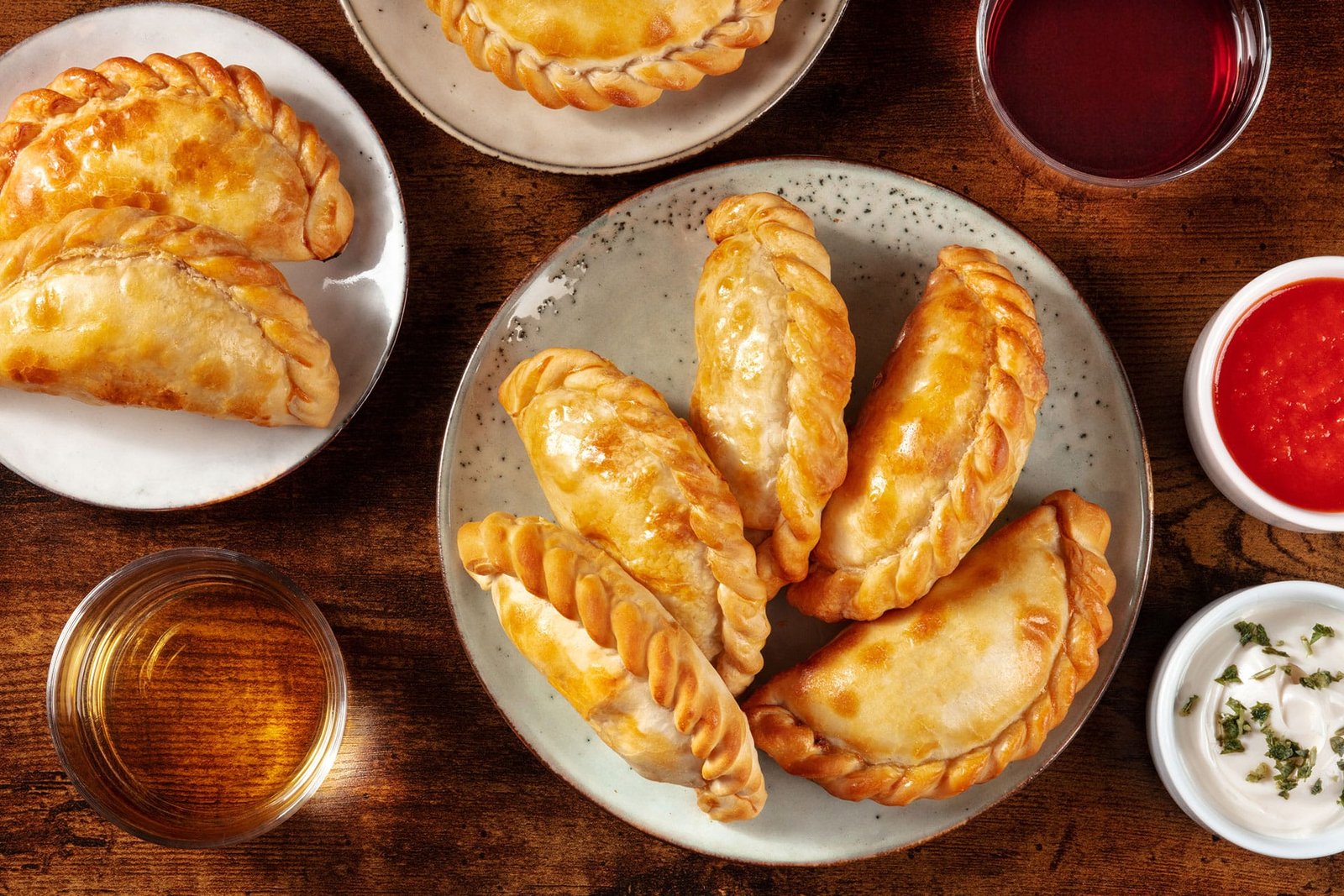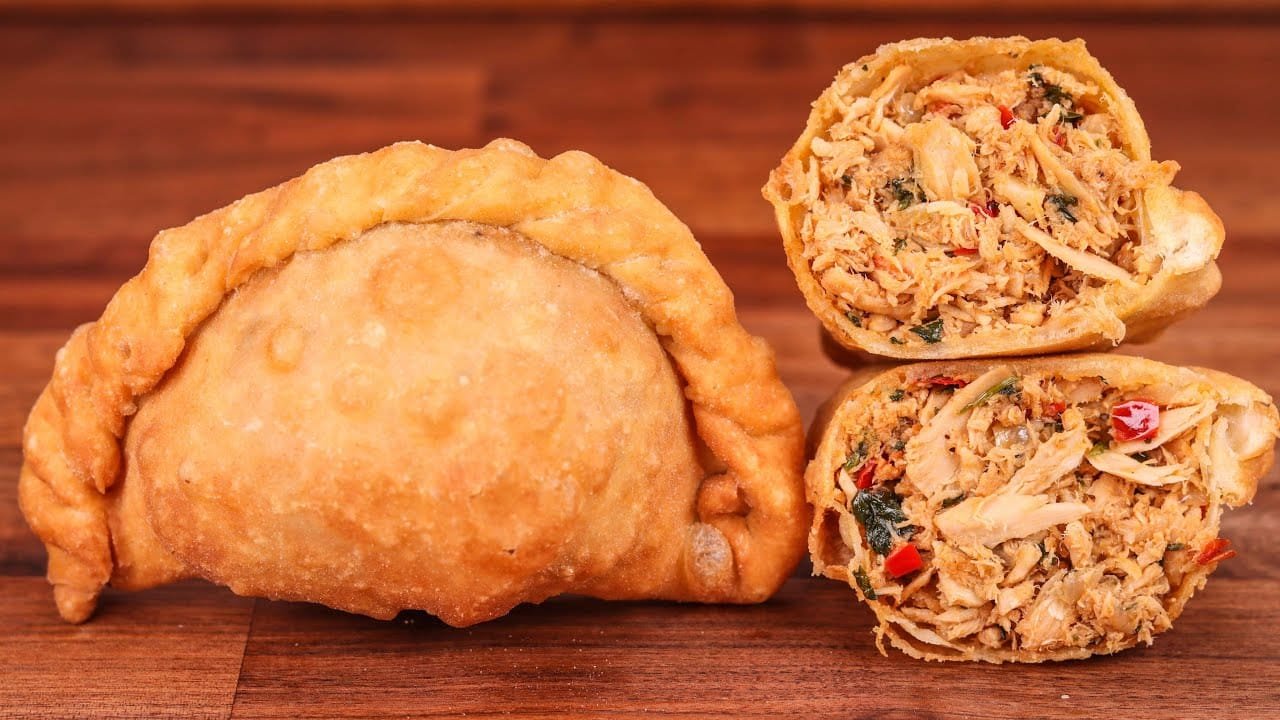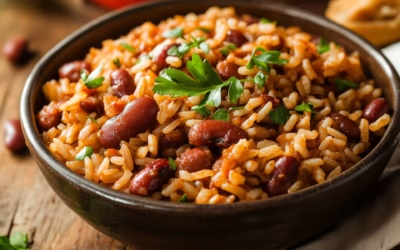Cape Verdean Pastéis Variations: Which one is The Best?

In Cape Verde, pastéis de atum are deeply rooted in the social tradition. No festive occasion – a birthday, holiday, or weekend get-together – is complete without a substantial mountain of these tuna pastries on the table. Often prepared in large batches of dozens or even hundreds, pastéis embody the Cape Verdean spirit of hospitality.
Neighbours often gather for pastel-making sessions, where they form a cooking assembly line: filling and frying these treats by the dozens. Such communal cooking reflects how many Cape Verdean recipes have been passed down through observation and oral tradition, with “a bit of this, a pinch of that,” rather than strict measurements. The result is that every family believes their mother or grandmother makes the best pastel – and they’re probably right, since each adds a personal touch.
Pastéis are typically enjoyed as snacks or appetisers. You’ll find them sold by street vendors in towns like Santa Maria, Mindelo, Praia, or São Filipe – handed to you in a paper napkin, hot and greasy in the best way.
Early morning markets, beachside bars, or ferry ports are familiar places to grab a few pastéis for the road. They pair perfectly with a cold beer or a local grogue (sugarcane spirit) in the evenings, or a strong coffee in the morning if you’re so inclined.
Because they’re portable and not too messy, pastéis also make great travel snacks – some even joke about stuffing a few in your bag as an edible souvenir from Cape Verde.
Pastéis And Their Regional Twists Across the Islands
Though pastél de atum is universally loved across Cape Verde, each island – and even each cook – puts its own subtle spin on the recipe. The core concept remains the same (tuna in fried dough), but you’ll find variations in dough and flavouring:
Dough Differences
On some islands, cooks enrich the dough with an egg or a splash of milk (as in the recipe above), while others stick to a basic mix of flour, water, and baking powder. A cook from Fogo might swear by a pinch of baking powder for puffiness, whereas a Praia native might use a yeast-leavened dough for a slightly breadier shell (a less common method, but one documented in some recipes).
Many people today use ready-made pastry circles (often sold as empanada wrappers) for convenience, a practice common in the Cape Verdean diaspora. In the past, however, making the masa from scratch was the norm, and some traditionalists still insist that a hand-kneaded dough yields the best texture – tender on the inside and crisp on the outside.
Pastél de Milho: Cornmeal Pastél
A noteworthy variation is the pastél de milho, where the dough is made from corn flour (milho means corn) – sometimes combined with mashed sweet potato – instead of wheat flour. This corn-based pastry is a bit more delicate to work with but yields a wonderfully crispy, slightly nutty shell. Inside, it’s still filled with the familiar seasoned tuna. Some say that pastél de milho was more common in earlier generations or in rural areas, where it utilised local corn and sweet potatoes.
It’s also associated with the term “pastél com o diabo dentro,” as some versions incorporate malagueta pepper for added heat. One traditional recipe for this variant involves boiling sweet potatoes, mashing them, and mixing the mashed sweet potatoes with fine cornmeal to form a dough. Then, it is filled with tuna spiked with garlic, red pepper flakes, and a hint of vinegar for a zesty kick. The result is a pastél with a darker, rustic crust and a spicy kick – so good it’s “devilish,” as the saying goes.
While not as commonly found as the regular wheat pastéis, pastél de milho is a treasured treat for those who know it, and some Cape Verdean cooks are striving to keep the technique alive (you may even find recipes being shared on social media to preserve this tradition).
Heat and Spice
Pastél recipes can vary in spiciness. On the island of Santiago (home to Praia), people historically enjoyed a hot pepper in their pastél – hence the nickname “devilish.” Yet in other islands, the filling might be mild, seasoned simply with onion, a little pepper, and perhaps a bay leaf or parsley.
A traditionalist comment about pastéis highlighted that “authentic CV pastél does not have bell peppers, tomatoes, or hot peppers” in the filling – reflecting a purist approach where tuna and onions are the stars.
On the other hand, cosmopolitan or experimental cooks have no qualms about adding a bit of diced bell pepper, tomato, or cilantro to their tuna, blurring the line slightly between a Cape Verdean pastél and its Senegalese cousin. This regional (and generational) range of spice preference means you should ask before taking a big bite – occasionally, that innocent-looking pastél might pack a fiery surprise!
Despite these minor differences, what unites all Cape Verdean pastéis is the love and pride that goes into them. Every island calls it by the same name, pastél, and it evokes the same warm memories of home and family.

Pastéis Fillings and Modern Variations
By tradition, when someone says pastel in Cape Verde, they’re talking about a tuna pastel (pastel de atum). Tuna – especially the canned tuna in olive oil imported from Portugal or sourced locally – is a pantry staple in Cape Verdean households, and its flavour is practically synonymous with this dish. In fact, many Cape Verdeans would scarcely consider any other filling truly “pastel.” As one Cape Verdean cook confessed, “Truthfully, I’ve never had pastel filled with anything else besides tuna!”. That said, variations do exist, and modern palates (and dietary needs) have inspired some alternative fillings:
Other Fish
If you’re not a tuna fan, you might find pastéis filled with flaky white fish, such as sea bream or halibut, especially in restaurants or when cooked by chefs who prefer a lighter filling. These are usually prepared in the same style (sautéed with onion and garlic). The taste is a bit more delicate than tuna. In West African neighbouring cuisines (such as Senegal), a standard filling is a mix of shredded fish, herbs, and sometimes a touch of potato or binder – so Cape Verde’s use of various fish fits into a broader regional pattern.
Meat Pastéis
While not traditional, some folks have experimented with ground meat fillings – think ground beef or minced chicken seasoned and cooked with onions and spices (similar to an empanada filling). Travel writers note that “some even propose varieties with meat” for a devilishly tasty pastel. The global ubiquity of meat turnovers likely influences the popularity of these meat pastéis. In the Cape Verdean diaspora, where people are exposed to Latin American empanadas and other cuisines, it’s not surprising to see a beef pastel or even a Cape Verdean “pastel” using leftover curry goat at a creative cook’s party. They’re delicious – but purists back home might playfully raise an eyebrow and remind you that true pastéis have peixe (fish).
Vegetarian and Bean Fillings
Cape Verdean cuisine is heavily influenced by fish and meat, so purely vegetarian pastéis are rare in the traditional context. However, modern cooks have created versions with savoury bean or vegetable fillings to cater to vegetarians. For instance, a pastel might be filled with a spicy mash of black beans or lentils, spiked with garlic and paprika, to mimic the hearty texture of tuna. Others might do a combination of sautéed cabbage, carrots, and peppers with plenty of seasoning for a veggie pastel.
These innovations are more common in international kitchens (among health-conscious or vegetarian Cape Verdeans abroad) than on the islands, but they show how versatile the pastel concept can be. After all, the dough is a blank canvas – much like a samosa or empanada – so why not get creative? As one baker put it, “Pastel are fried dough pockets… They can also be stuffed with other ingredients like meat or just vegetables.”.
Cheese and Fusion Twists
Taking a cue from Brazilian pastéis or global fusion, some have tried adding a little cheese to the filling (imagine tuna and cheese melting together – not traditional, but certainly indulgent). Others have created “mini pastéis” with international flavours – for example, a curried vegetable pastel or a pastel filled with shredded buffalo chicken – as a playful appetiser. These aren’t common, but they occasionally pop up in Cape Verdean-American communities that enjoy blending cuisines.
It’s worth noting that any deviation from the tuna filling is usually explicitly named (e.g., pastel de carne for beef, pastel de galinha for chicken) to distinguish it. But inside Cape Verde, those alternatives are still far less common than the faithful tuna.
Pastéis in the Cape Verdean Heart
Writing about pastéis wouldn’t be complete without touching on their cultural resonance. For many Cape Verdeans, especially those abroad, biting into a pastel is like a nostalgic journey home. It’s the taste of childhood afternoons, of beach vacations on the islands, of aunties gossiping in Creole over the sizzle of frying dough. As one food writer aptly put it, “pastels are so good that once you’ve tried them, the chances are that you’ll want to eat them over and over again” – they have a comforting, addictive quality.
In Cape Verde’s cuisine, dominated by hearty meals such as cachupa (a corn and bean stew) and feijoada (a bean and meat stew), the humble pastel stands out as a joyful and convivial food. It’s quick to eat and convenient to carry. And it brings people together. Children learn to make them by watching elders, often starting by crimping the edges with forks; it’s a rite of passage in the kitchen. And because pastéis are relatively affordable and straightforward to make in large quantities (a little tuna and flour can feed a crowd), they embody the resourcefulness of island life – creating something delicious out of modest ingredients.
Today, with globalisation, you’ll find recipes for Cape Verdean pastéis in cookbooks, blogs, and YouTube videos, spreading this once-local treat to an international audience. Food bloggers compare them to otherworldly pastries and marvel at how a dash of Portuguese influence and a dash of African spice created this perfect snack. Yet for all the comparisons, an actual Cape Verdean pastel de atum remains unique. It carries the soul of a seafaring nation – the tuna from its ocean waters (or its pantry shelves) and the warmth of its people.
Next time you fry up a batch, savour not just the taste but the heritage wrapped in that crispy pocket. And if you ever visit Cabo Verde, follow the aroma down a side street in Mindelo or Praia and enjoy a pastel com diabo dentro right where it originated. It’s a small culinary adventure that speaks volumes about Cape Verde’s history and heart. Bom proveito!
Bibliography
- Cape Verdean Pastel Recipe – Pastel de Atum by Crystal DaCruz on Crumb Snatched;
- Pastels by Vera Abitbol on 196flavors.com;
- Cape Verdean Food: 26 Authentic Recipes by Crystal DaCruz on Crumb Snatched;
- How to Make Perfect Pastel de Atum on ChainBaker.com;
- Oven pastel with tuna (photo) on Dellys Blog.







